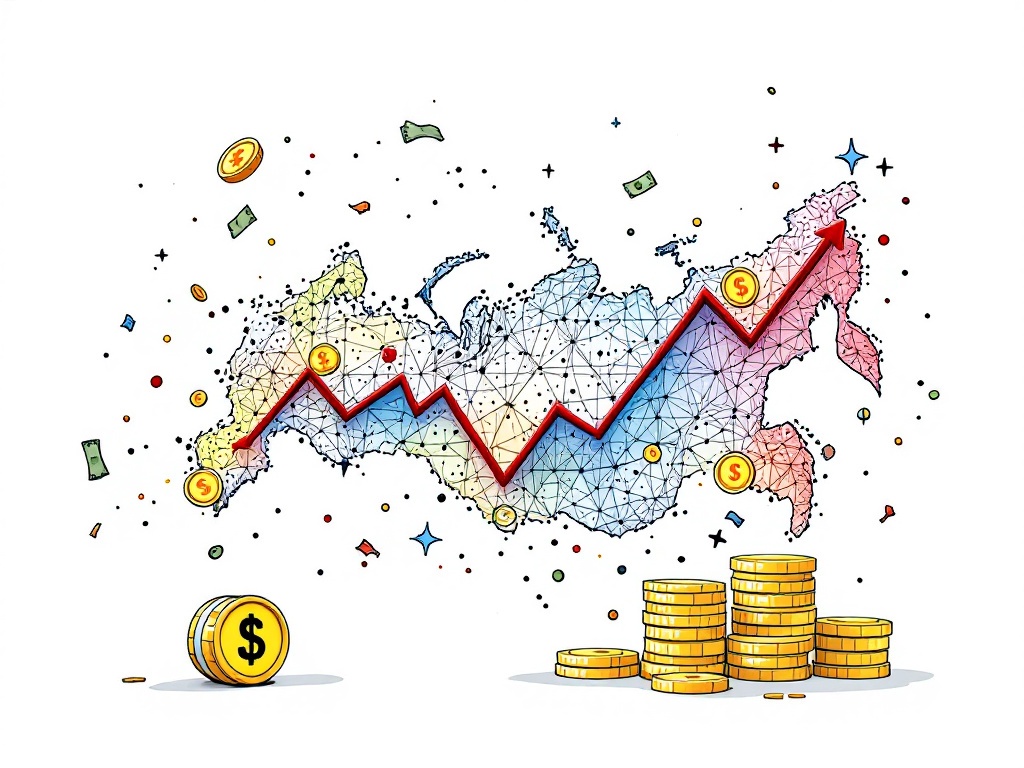Russia's Economic Fortress: CASE Report Reveals Unexpected Resilience Through 2027

Russia, Monday, 18 November 2024.
Despite Western sanctions, Russia’s economy shows remarkable resilience with 3.6% growth in 2023 and projected 3.8-4.0% for 2024. The transformation into an ‘alternative globalization’ center, coupled with effective domestic market adaptations, suggests stability for at least the next three years, challenging initial collapse predictions. Military spending and labor shortages drive wage growth, while civilian sectors demonstrate surprising vitality with up to 10% growth in key areas.
Economic Strategies and Structural Shifts
Russia’s economic resilience, as highlighted in the latest CASE report, underscores a strategic shift that defies earlier collapse predictions. The country has adeptly maneuvered through sanctions and inflationary pressures, largely due to its focus on enhancing military spending and navigating labor market challenges. These factors have collectively bolstered wage growth and, in turn, stabilized consumer spending. This economic fortitude is attributed to Russia’s transition into an ‘alternative globalization’ model, characterized by a reorientation of trade towards non-Western economies, thereby cushioning the impact of Western economic sanctions[1].
Civilian Sector Growth and Economic Diversification
Notably, the civilian sectors of the Russian economy have exhibited robust growth, with industries such as hotels and catering, information and communications, and financial services showing impressive expansion rates of up to 10%. This growth is indicative of a broader economic diversification strategy that mitigates the reliance on hydrocarbon exports. The increase in retail deposits by 53.8% year-on-year in 2024 further highlights the middle class’s adaptation to the high-interest-rate environment, turning it into a profitable savings opportunity. Such financial agility underscores the resilience of Russia’s domestic markets despite external pressures[1].
Military Keynesianism and Economic Sustainability
CASE’s analysis points to military Keynesianism as a critical driver of economic stability. The government’s significant investment in defense not only supports its geopolitical objectives but also stimulates economic activities through increased demand for goods and services. However, experts like Vladislav Inozemtsev caution against potential risks, predicting a cooling of the economy by 2025 due to rising borrowing costs and a possible wave of bankruptcies. Despite these concerns, the current trajectory suggests that Russia’s economic strategies provide a buffer against immediate crisis scenarios[1].
Globalization and Market Dynamics
Russia’s transformation into a hub of ‘alternative globalization’ presents both opportunities and challenges. By fostering closer ties with emerging economies in the Global South, Russia has effectively mitigated the isolation intended by Western sanctions. This strategic pivot has not only sustained export levels but also facilitated a shift in the global economic balance. Nonetheless, the sustainability of this model hinges on continued economic reforms and the ability to adapt to international market dynamics. The Kremlin’s focus on maintaining efficiency within state-controlled and private sectors further reinforces this resilience, suggesting a complex interdependence between state policy and market forces[1].